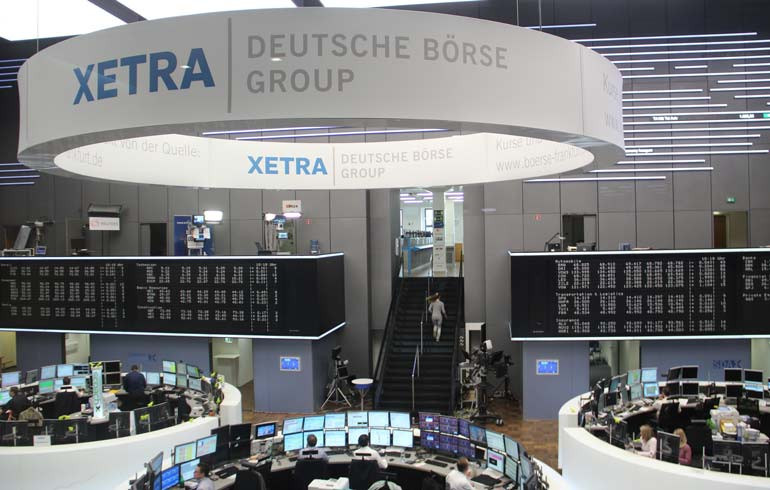At the auction on Friday, the key stock indicators of Western Europe show a partial recovery after a prolonged fall.
So, when this was written, the British FTSE 100 index increased by 1.01% to 7116.42 points, the French CAC 40 rose by 1.39% to 5966.9 points, and the German DAX – by 1.45% to 13228.9 points.
At the same time, following the results of the difficult outgoing week, the leading European indicators risk showing a spectacular collapse: the DAX is set to fall by 5%, the CAC 40 may lose 4.7%, and the FTSE 100 – 3.8%.
Leaders of growth and decline
The value of the securities of the largest British grocery chain Tesco sank by 0.7% on the news that the company's sales volume in March-April 2022 significantly decreased. In addition, Tesco management warned of an "incredibly difficult market environment" amid the struggle of buyers with ever-increasing inflation.
The quotes of the largest financial and credit group in Spain, Banco Santander, soared by 0.7%. The Bloomberg news agency reported that Banco Santander plans to appoint an insider Hector Grisi as chief executive officer to replace the current executive director Jose Antonio Alvarez.
Factors influencing the market
A day earlier, Europe's key stock indicators lost more than 3% amid tightening monetary policy by world central banks due to record-rising inflation. European investors are seriously concerned about a potential large-scale downturn in the global economy. Such concerns are not alien to their American counterparts either: US stock indexes sharply declined by 2-4% on Thursday.
Following the meeting on Thursday, the Bank of England increased the discount rate by 0.25% for the fifth consecutive time since December 2021. The current indicator of 1.25% per annum has become the highest in the last 13 years. In addition, the British central bank has made a forecast about the acceleration of annual inflation in the country above 11% by October this year.
On the same day, the Swiss National Bank unexpectedly raised the rate by 50 basis points to -0.25% per annum for the first time since 2007. In addition, the central bank said that in the near future it may once again increase rates to stabilize inflation.
On Wednesday, the US Federal Reserve raised its benchmark rate by 75 basis points for the first time since 1994.
As part of a press conference following the US central bank meeting, Fed Chairman Jerome Powell said that next month the base rate level could be raised by another 50-75 basis points.
In addition, the Fed has updated economic forecasts downward. Thus, Fed members assume that by the end of this year, the gross domestic product of the United States will grow by 1.7% against the previously forecast 2.8%.
The only exception in this series of hawkish decisions of world central banks was the Bank of Japan. So, at a meeting on monetary policy on Friday morning, the central bank decided to stick to the strategy of keeping the yield on 10-year bonds at zero.
Trading results on Thursday
As for the results on Thursday, European stock indicators showed a steady decline amid investors' concern about the prospects for the global economy.
As a result, the STOXX Europe 600 composite index of the leading companies in Europe decreased by 2.47% and ended up at 402.88 points, which was the lowest value since the beginning of 2021.The best results among the components of STOXX Europe 600 were shown by the securities of the British car dealer Inchcape Plc (+3.7%) and the French service company Edenred (+3.4%).
Leading the decline here were British online retailer THG PLC (-29%), German online clothing retailer Zalando SE (-12.4%) and Dutch semiconductor equipment maker BE Semiconductor Industries N.V. (-11.5%).
Meanwhile, the British FTSE 100 fell by 3.14% to 7,044.98 points, the French CAC 40 lost 2.39%, dropping to 5,886.24 points, and the German DAX sank by 3.31% to 13038.49 points.
An additional downward factor for the European stock market was also the internal statistics on the euroregion. The inflation rate in Italy accelerated in annual terms to 6.8% in May from April's 6%. Despite the fact that analysts had predicted an increase of up to 6.9%, it still turned out to be the highest since 1986.
On a monthly basis, the level of consumer prices in Italy rose by 0.8% in May against a fall of 0.1% in April.





















